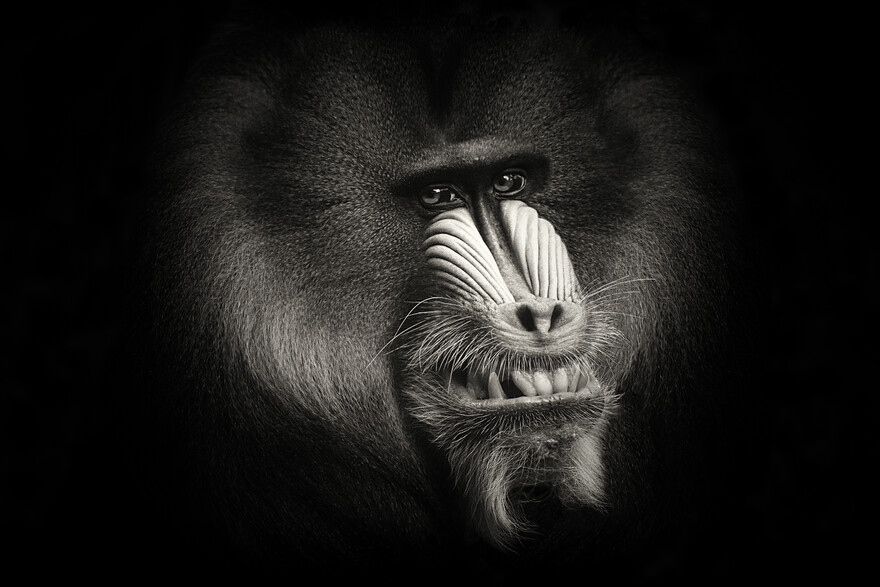The Mandril is one of several species of primates I photographed in 2015. In 2015 I travelled to Africa so that I could see primates while they were still living in their natural habitats. And at the time I wasn’t sure if I would ever get the opportunity to do this again. From 2013 - 2023 I photographed a project, which is called ICU TOO. The ongoing photographic series project, and aim was to ignite a human interest in primates that were on the IUCN Red List of Endangered Species.
Since travelling to Africa I decided also to photograph primates that are endemic to Borneo, as well as those who live in sanctuaries or are born and bred in zoos. I like to study the faces of all primates, as each is as individual as a human face. I also studied online primatology education while I was unable to travel.
The difficulty in photographing primates in the wild is their unpredictable, uncontrolled behaviour, in limited time. This makes it hard to know what to expect.
When unable to study primates in the wild, I study them in sanctuaries and zoos around the world. I call my photographs a study, as I am always learning from primates. Primates born and bred in zoos are also not as predictable as you might expect, as there are only some behaviour controls. I would like to always photograph primates in the wild, however, with the way their natural habitats are changing this might not always be possible. My photographs are not about habitat, they are about the animal itself. My photographs are my tool to mime the living primates.
Photographs made by me are not cropped, I use a zoom lens and closely frame the primate's face. It is by artistic choice that I have no background, as it is about facial features. I edit photographs in black and white to entice the viewer to look closely at the primate's face, and to be challenged by the parallels that primates might have with humans. I use a black vignette to enhance the point of view. The mandril is one of the most colourful primates, however in the photograph it is not about the attraction of colour, it is about the primate species. I have been photographing primates and editing them in black and white for almost ten years, which has become a style which I am recognised.


